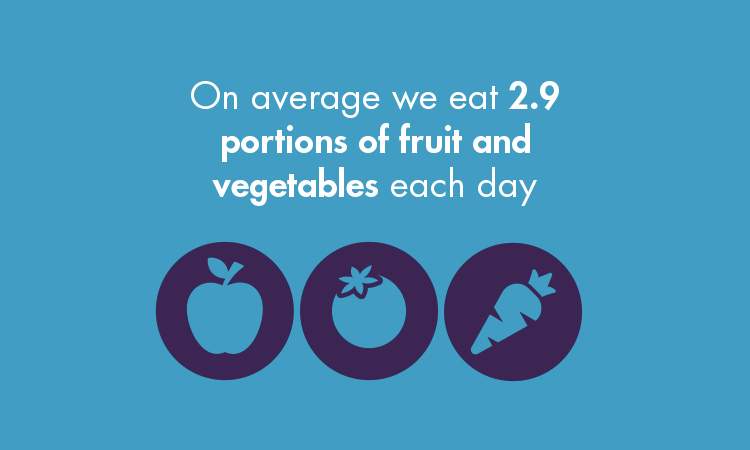What's on this page:
In Scotland, Dietary Goals are used to benchmark the national diet and where we need to be. Food Standards Scotland monitor progress towards achieving the Scottish Dietary Goals by looking at dietary intakes.

The impact of consuming less meat and dairy
To understand the impact of achieving recommendations for meat and dairy reduction made by the Climate Change Committee, Food Standards Scotland commissioned research from the University of Edinburgh. The research uses data on dietary intakes collected in adults, as part of the Scottish Health Survey (SHeS) in 2021.
Monitoring dietary intakes using Intake24
Intake24 is an online 24 hr dietary tool developed by Newcastle University and commissioned by Food Standards Scotland. Intake24 is designed to collect detailed dietary intake data, and was included within the 2021 Scottish Health Survey. In this survey, over 3000 adults aged 16+ completed at least 2 days recall.
Most recent reports:
- Consumption of discretionary foods and drinks and other categories of dietary concern in adults (16+ years)
- The Scottish Health Survey - 2021
Previous reports:
Secondary analysis of the Living Costs and Food Survey
Secondary analysis of the Living Costs and Food Survey has been our primary method of monitoring against the Scottish Dietary Goals since 2001, with data available up to 2018. The aim of this work has been to monitor annual trends in food consumption and nutrient intakes using a robust methodology developed to convert purchase to consumption.
Most recent report:
Previous reports:
- Estimation of food and nutrient intakes from food purchase data in Scotland between 2001 and 2015
- Contribution of Foods to intakes of energy and selected nutrients using food purchase data in Scotland 2001 to 2012
- Monitoring progress towards the Scottish Dietary Goals 2001 to 2012 - Report 1
- Monitoring progress towards the Scottish Dietary Goals 2001 to 2012 - Report 2
- Estimation of food and nutrient intakes from food survey data in Scotland
- Deriving and interpreting dietary patterns in the Scottish diet: Further analysis of the Scottish health survey and expenditure and food survey
The National Diet and Nutrition Survey (NDNS)
The NDNS rolling programme is a continuous, cross-sectional survey. It is designed to collect detailed, quantitative information on the food consumption, nutrient intake and nutritional status of the general population aged 1.5 years and over living in private households in the UK. Data from the Scottish boost enabled a direct comparison of intakes in Scotland with the rest of the UK.
Monitoring eating patterns and behaviours
Kantar are a market research company who collect longitudinal information on purchases into the home from a large Great Britain household consumer panel of around 30,000 panellists. Around 11,000 of these panellists also record the food and drink they eat at home or carry out (around 1,000 in Scotland). This subset of the main purchasing panel is called the usage panel.
Most recent reports:
- Eating patterns and behaviours inside the home in Scotland 2021 | Food Standards Scotland
- Exploring the impact of COVID-19 on eating patterns and behaviours inside the home in Scotland | Food Standards Scotland
- Consumption of meat alternatives and engagement with Veganuary | Food Standards Scotland
- Purchase and Consumption of Non-Dairy Alternative Products and Oat-Based Products | Food Standards Scotland
Monitoring urinary sodium
As part of the NDNS rolling programme, adults aged 19 to 64 years in Scotland took part in surveys in 2014 and 2016 to provide a 24-hour urine collection to measure salt intakes. The survey in Scotland ran concurrently with the survey in England.
Most recent report:
Previous reports:
Monitoring children’s intakes
These reports explore the dietary intakes of children and young people in Scotland.
Most recent report:
Previous reports:
Vitamin D status in Scotland
There is limited data available on the vitamin D status of population groups in Scotland. The Scottish Health survey rolling programme has previously been used to obtain blood samples for vitamin D analyses and provide a marker of vitamin D status in adults.